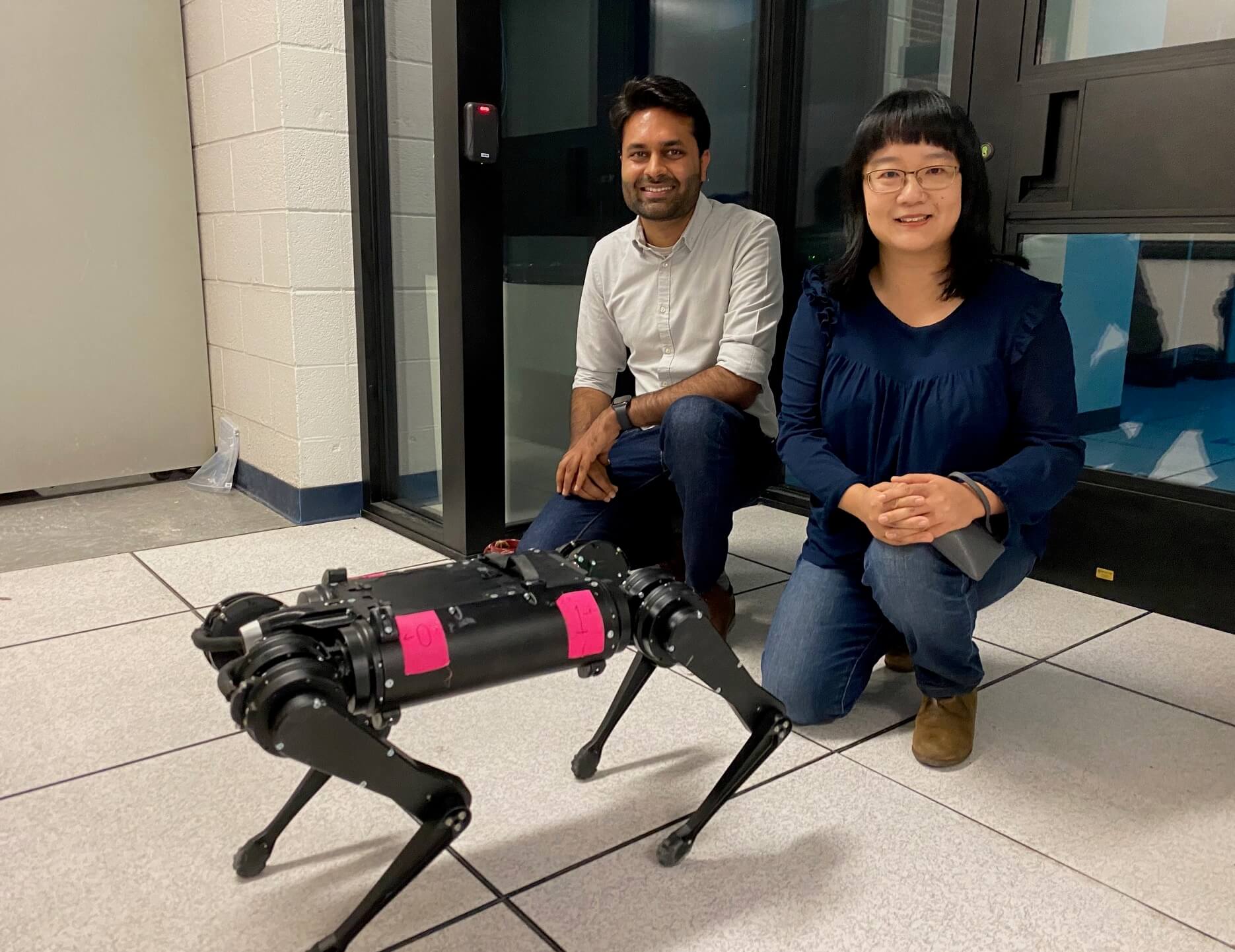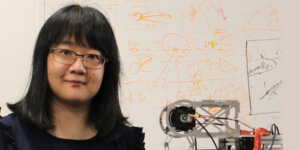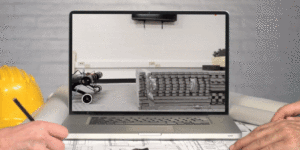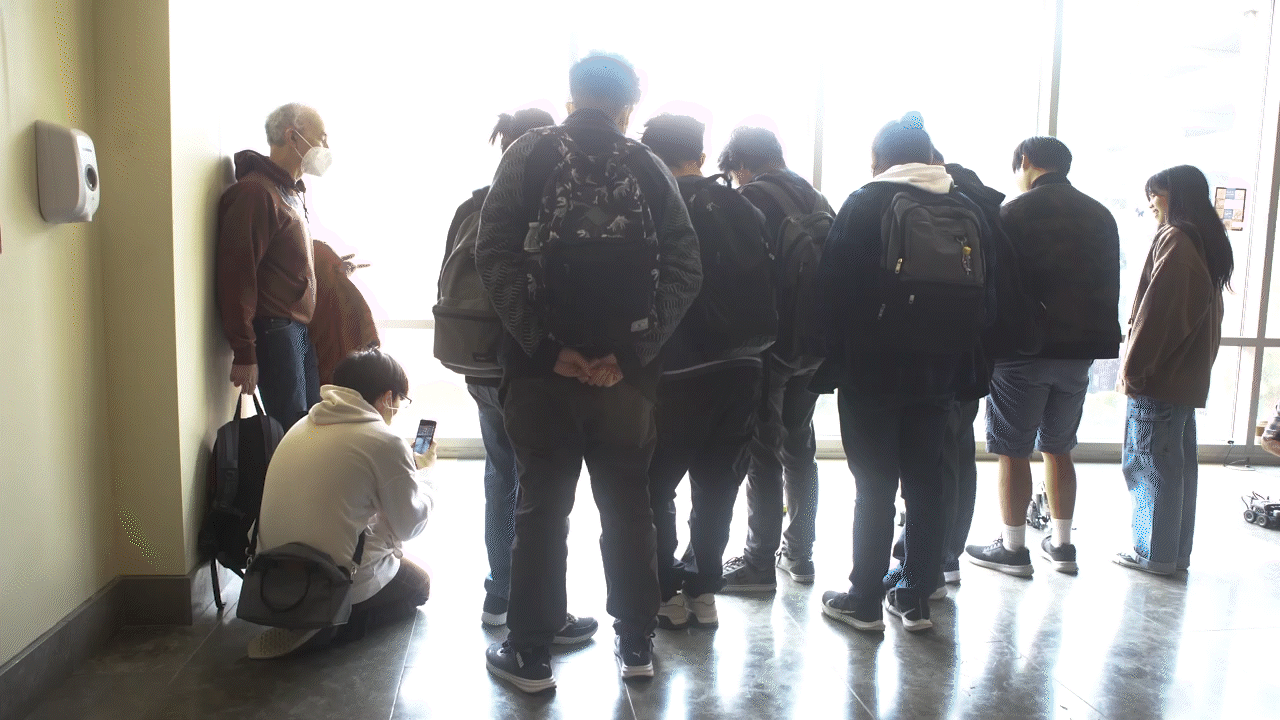
Somil Bansal and Feifei Qian outside a lab in the basement of the Hughes Aircraft Electrical Engineering Center, where Prof. Qian programs legged robots to adjust to various terrain when walking. Her work and Prof. Bansal’s robotics work share commonalities. (USC Photo/Landon Hall)
Feifei Qian and Somil Bansal have something in common: Their work focuses on making robots function more efficiently and reliably in the real world.
A key difference: Qian’s research focuses on enabling robots – especially legged robots – to better understand foot-terrain interactions and use this understanding to acheve higher mobility across natural, complex landscapes like sand, mud and ice. Bansal is more concerned about safety. Especially when robots are out and about, sharing public spaces with unpredictable humans.
Their promising research earned Qian and Bansal, both faculty members in the USC Viterbi Ming Hsieh Department of Electrical and Computer Engineering, CAREER Awards from the National Science Foundation this year. The awards honor early-career faculty with the potential to serve as academic role models in research and education to lead advances in their respective fields.
“She interviewed me when I was joining” ECE, says Bansal, an assistant professor of electrical and computer engineering and computer science, sitting next to Qian in his office at the Hughes Electrical Engineering Center. “I learn a lot from Feifei’s expertise in different types of legged robots. My students really enjoy her courses, too. So we are very well aware of each other’s work.”
The NSF award covers 5 years, which Qian says “prompts us to think about: ‘In 5 years what should come out of the research that we’re currently doing?’ ”
Qian, the WiSE Gabilan Assistant Professor of Electrical and Computer Engineering and Aerospace and Mechanical Engineering, directs the Robot Locomotion and Navigation Dynamics (RoboLAND) lab. She and her team investigate the locomotion of bio-inspired robots on challenging terrains, and reveal how these robots could adjust their gaits to generate desired dynamics by properly interacting with these terrains.
Remember the Mars rover Spirit? In 2009, it was tooling around the Red Planet when it got stuck in soft sand. The iron sulfate mineral (jarosite) that lay just beneath the soil caused the wheels to slip, and this locomotion failure eventually forced the rover to end its mission. The research from Qian’s work will produce robot-sensing and locomotion strategies that can allow future robots and rovers to predict, avoid and recover from similar catastrophic failures.
In addition to laboratory experiments, Qian’s team also brings its robots to field testing in a variety of environments, including the soft sand on Manhattan Beach; White Sands National Park in New Mexico; the grassy hills of the San Diego Zoo Safari Park; and, earlier this month, the ice at the Palmer Glacier on Mount Hood, east of Portland, Oregon. “We are not just looking to confirm successes in these challenging environments. More importantly, we look for failures that could inform new discoveries,” Qian said, “When the robot leg slips on ice or sinks into soft snow, it inspires us to look for new principles and strategies that can push the boundary of human knowledge and enable new technology. We learn and improve from the observed failures.”
View this post on Instagram
The goal is to one day let robots roam autonomously, on Mars or other celestial lands. The more agile and robustly they could move, the more scientifically useful information they can collect and transmit. They would be nimble and packed with pre-loaded experiential data, and they would keep learning as they go.
Bansal also studies how robots – those that walk, roll and fly – engage with their surroundings. His lab studies information relayed from cameras and sensors, with the idea that one day autonomous robots, without someone manning a remote control, would use this information to make wise decisions. Human beings, at the top of the food chain yet forever fallible, are out there, and how robots interact with them will dictate how well such machines are received by people. Bansal has real-world experience with this: For a year, from August 2020 to August 2021, he worked as a research scientist at Waymo, formerly the Google Self-Driving Car Project. Waymo’s driverless cars have been touring the streets of San Francisco, and there have been successes to go along with some very public failures.
“Previously, robots had been tested in cages, where humans didn’t go,” Bansal says. “The human and robot now need to come together collaboratively. But that increases the safety risk. There are human lives at stake, and it is very important to explicitly ensure robot and human safety, especially as we move towards ML and data-based decision-making in robotics.”
Bansal even talks of “robot ethics,” a concept straight out of science fiction. For right now, the Viterbi engineers are trying to get the machines to function properly so we can see a horizon where they’re serving humanity, as effectively and safely as possible.
“Sometimes the robots make very silly mistakes,” Bansal said. “Our goal is to maximize the usefulness and minimize the silliness.”
It’s easy to imagine a future in which a robot, its “brain” filled with knowledge about how to walk and how to act, gathers information alongside human colleagues. Or, in places too inhospitable for us, they can be trusted to do the work on their own.
Published on September 21st, 2023
Last updated on September 22nd, 2023












